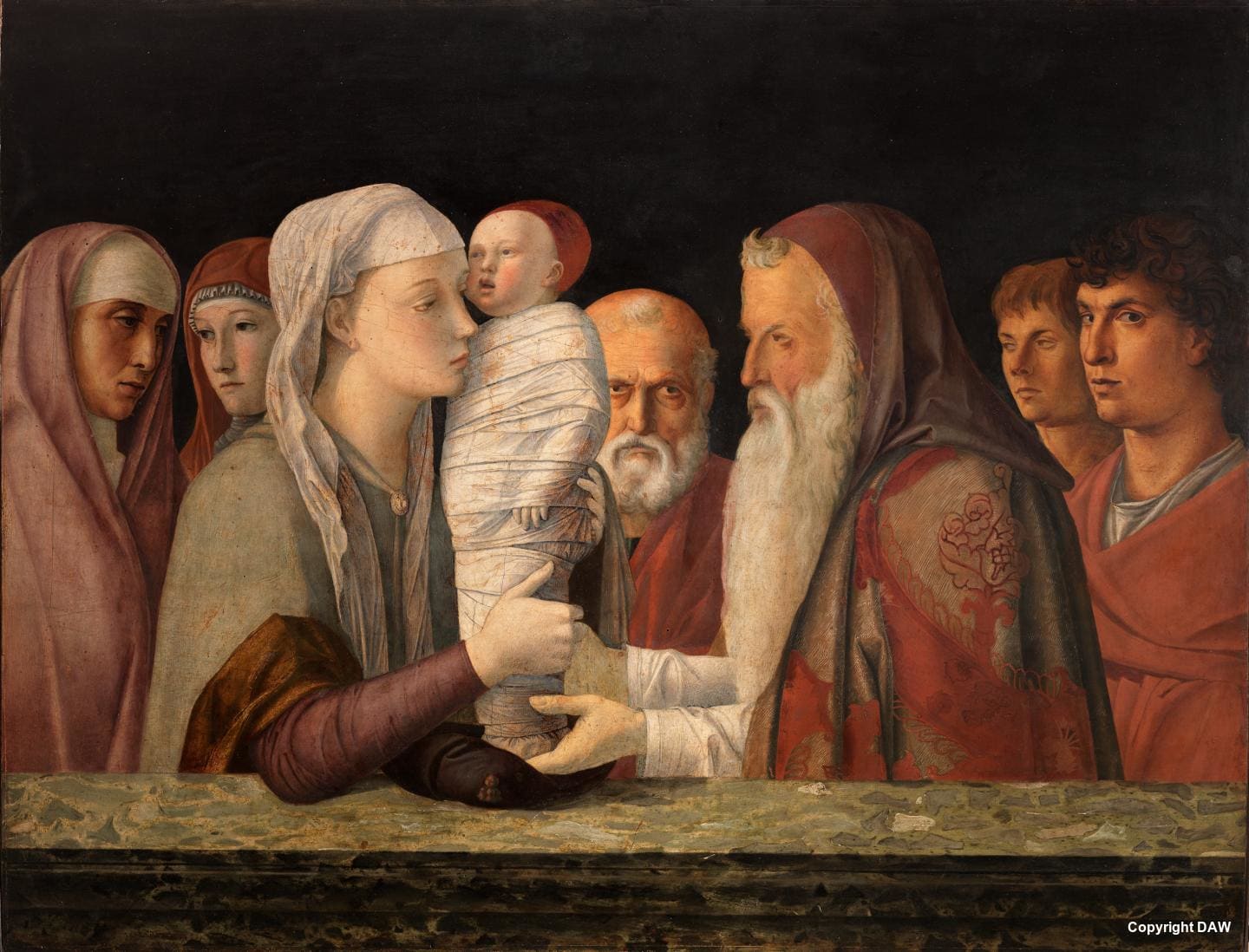Artwork Details
The painting is one of the most important items in the Querini Stampalia collection. It is a part of the sacred conversations, intended for private clients, usually displayed in the bedroom and family chapels of the Venetian palaces. It depicts a moment in the Gospel when Joseph observes the passage of the Infant Jesus in swaddling clothes from his mother’s arms to the hands of the high priest Simon in the temple of Jerusalem.
The work represents the poetic character of the Master in a nutshell. The colour is imbued with natural light that unfolds freely. Twenty years later, Bellini takes inspiration from a similar work by Mantegna, now preserved in Berlin, with its black background and the half-length figures. In Bellini’s work the features are softened, Mary and Simon’s clothes simplified, and the false marble frame transformed into a parapet that separates the real space from the painted one.
There are also two additional figures on both sides. The idea of his brother-in-law Mantegna was innovative at the time. The Presentation of Jesus at the Temple was set inside a church and the characters appeared full-length. Bellini wanted to try this new pictorial innovation, insisting above all the sensibility and humanity of the characters captured in their daily activities. The painting is a family portrait with Giovanni and his wife Ginevra, his stepmother Anna, father Jacopo and brother Gentile, or according to other critics, his brother-in-law Andrea Mantegna. The splendid hidden drawing was discovered thanks to reflectographs carried out during recent scientific investigations that confirm the attribution to Bellini.
Artist Details
View All From Artist
Bellini was born in Venice probably around 1430. He studied with his brother Gentile and his father Jacopo, who were known artists, but he also showed interest in Vivarini and especially in the work of his brother-in-law, Andrea Mantegna. He went to Padua from 1443 to 1453 where he was influenced by Donatello’s work, which can be seen in his works made in the 1460s with shallow lines in landscapes and figures and with bright and polished colours. Among them are the altarpiece of San Vincenzo Ferreri (SS. Giovanni and Paolo), the Crucifixion and the Transfiguration (Museum Correr), the Prayer in the Garden (National Gallery, London) and juvenile paintings of Madonna and Child and Pietà.
Bellini often softened the forms and preferred less harsh tones of colours, which can be seen in the altarpiece of Pesaro (Coronation of the Virgin, Museo Civico) of 1475. During this period, he also painted the Madonnas of Brera and Santa Maria dell’Orto, the Transfiguration of Capodimonte (1480 - 85) and the altarpiece of San Giobbe (1480) the Triptych of Frari (1488) where you can already see some typical 16th-century influences. The composition is large and solemn, peaceful and sweet, before the works of San Zaccaria (Madonna in the throne with saints, 1505) and San Giovanni Crisostomo (St. Jerome, 1513) where the form and colours are inspired by the works of Giorgione and Titian.
Bellini died in Venice in 1516.
Collection Details
View all from collection
Collection of paintings, sculptures and decorative arts in the former home of a Venetian family.
